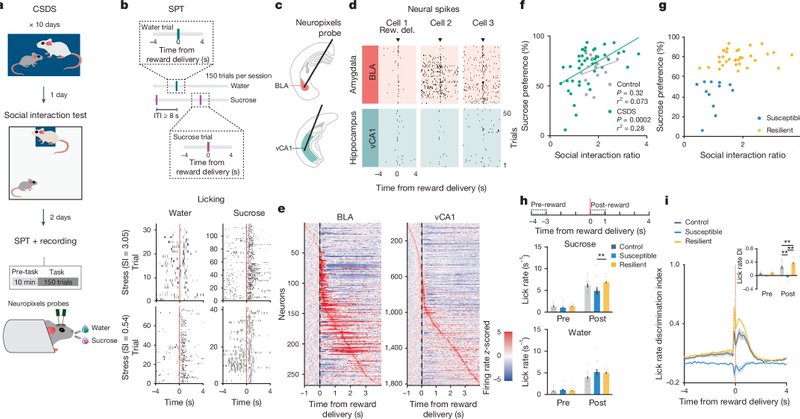
Frances Xia
@_fxia
Followers
248
Following
330
Media
14
Statuses
65
Neuroscientist @UCSF | NARSAD Young Investigator
San Francisco, CA
Joined October 2017
RT @StefanoFusi2: A beautiful work with a wonderful team! A lot of new ideas and a huge number of elegant experiments.
0
1
0
RT @VFascianelli: What is the neural code and statistical structure of neural states characterizing stress?.Our new work out in Nature answ….
nature.com
Nature - Examination of the neural activity in the basolateral amygdala and ventral CA1 of mice during tasks or rest following exposure to social stress reveals signatures of resilience and...
0
17
0
RT @mazen_kheirbek: Thrilled to share our new paper in @Nature - "Understanding the neural code of stress to control anhedonia." A wonderf….
nature.com
Nature - Examination of the neural activity in the basolateral amygdala and ventral CA1 of mice during tasks or rest following exposure to social stress reveals signatures of resilience and...
0
47
0
end/ Huge thanks to the dream team! Grateful for the expert guidance and unwavering support from @mazen_kheirbek. Invaluable collaboration with my co-first @VFascianelli, and @StefanoFusi2. As well as @nineuron, Frances Ghinger, Andrew Kwon, @mmgergues, and @LalaLahin!.
1
0
6
Excited to share our new paper out now @Nature, where we identified neural signatures of stress susceptibility and resilience in the amygdala-ventral hippocampal network to enable control of anhedonia! <gt;. Thread below:.
nature.com
Nature - Examination of the neural activity in the basolateral amygdala and ventral CA1 of mice during tasks or rest following exposure to social stress reveals signatures of resilience and...
7
44
209
RT @jeremy_biane: New preprint is up examining what information is encoded by the ventral hippocampus (vhpc).Gotta love those studies where….
biorxiv.org
The ability to discriminate and categorize the meaning of environmental stimuli and respond accordingly is essential for survival. The ventral hippocampus (vHPC) controls emotional and motivated...
0
22
0
RT @mmgergues: New pub alert! Check out this new review @LalaLahin @mazen_kheirbek and I wrote together on the interesting work that has be….
nature.com
Neuropsychopharmacology - Identifying dysfunctional cell types and circuits in animal models for psychiatric disorders with calcium imaging
0
20
0
RT @VFascianelli: Our work on individual differences in monkeys and RNNs is out on Nat Comms!.A huge thanks to @ald….
0
42
0










